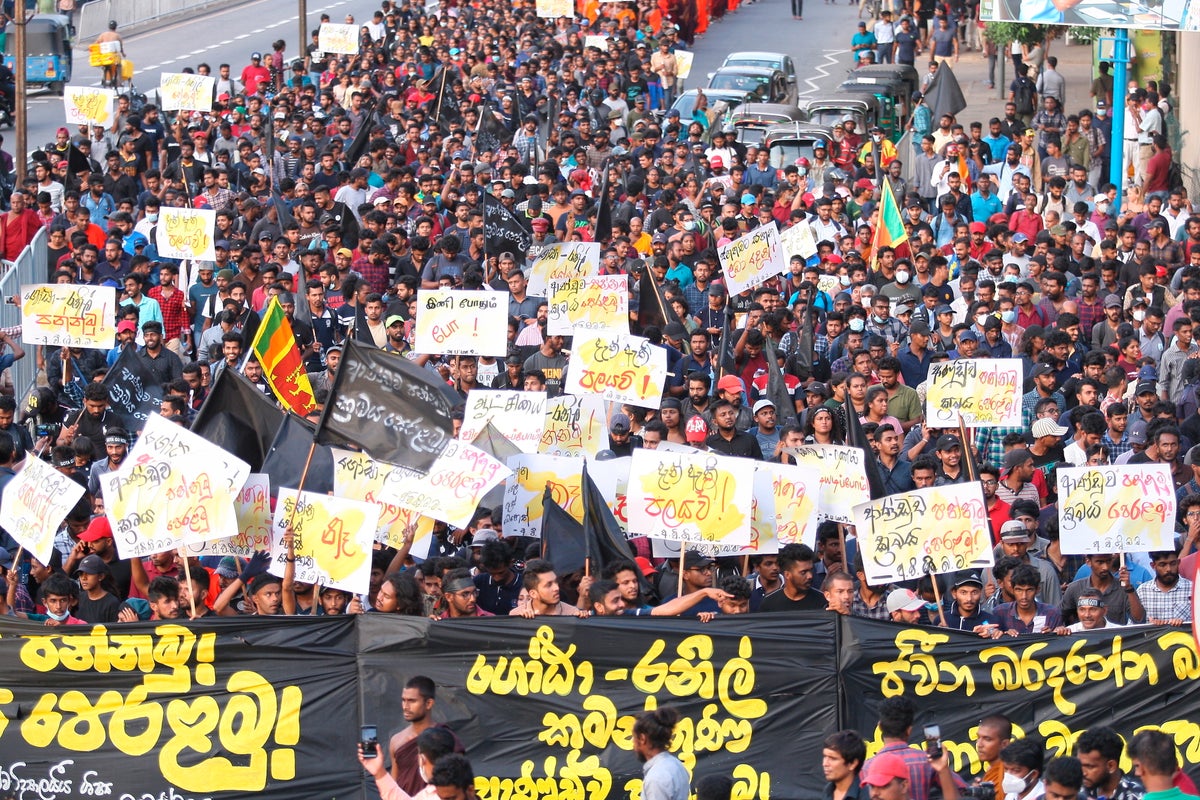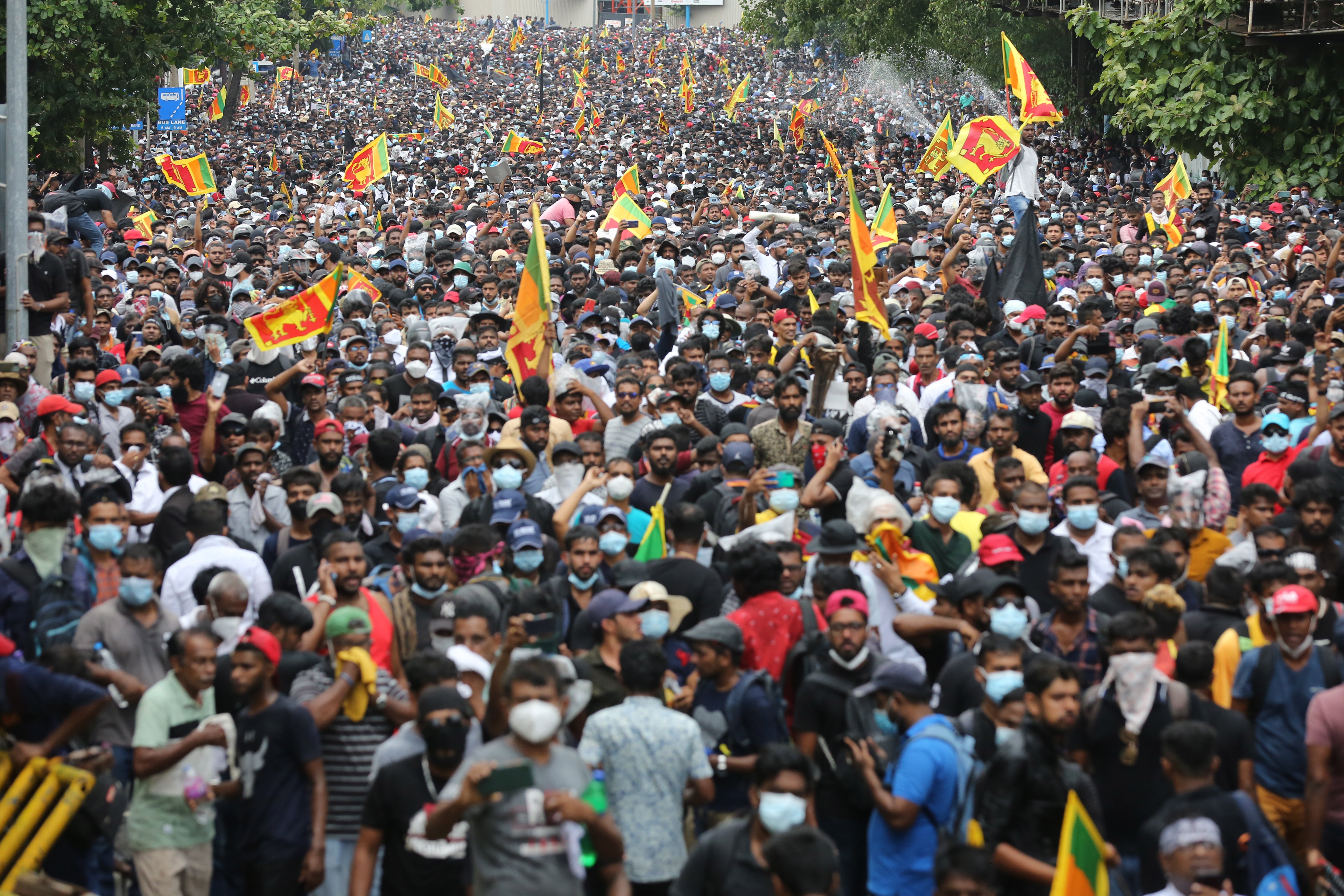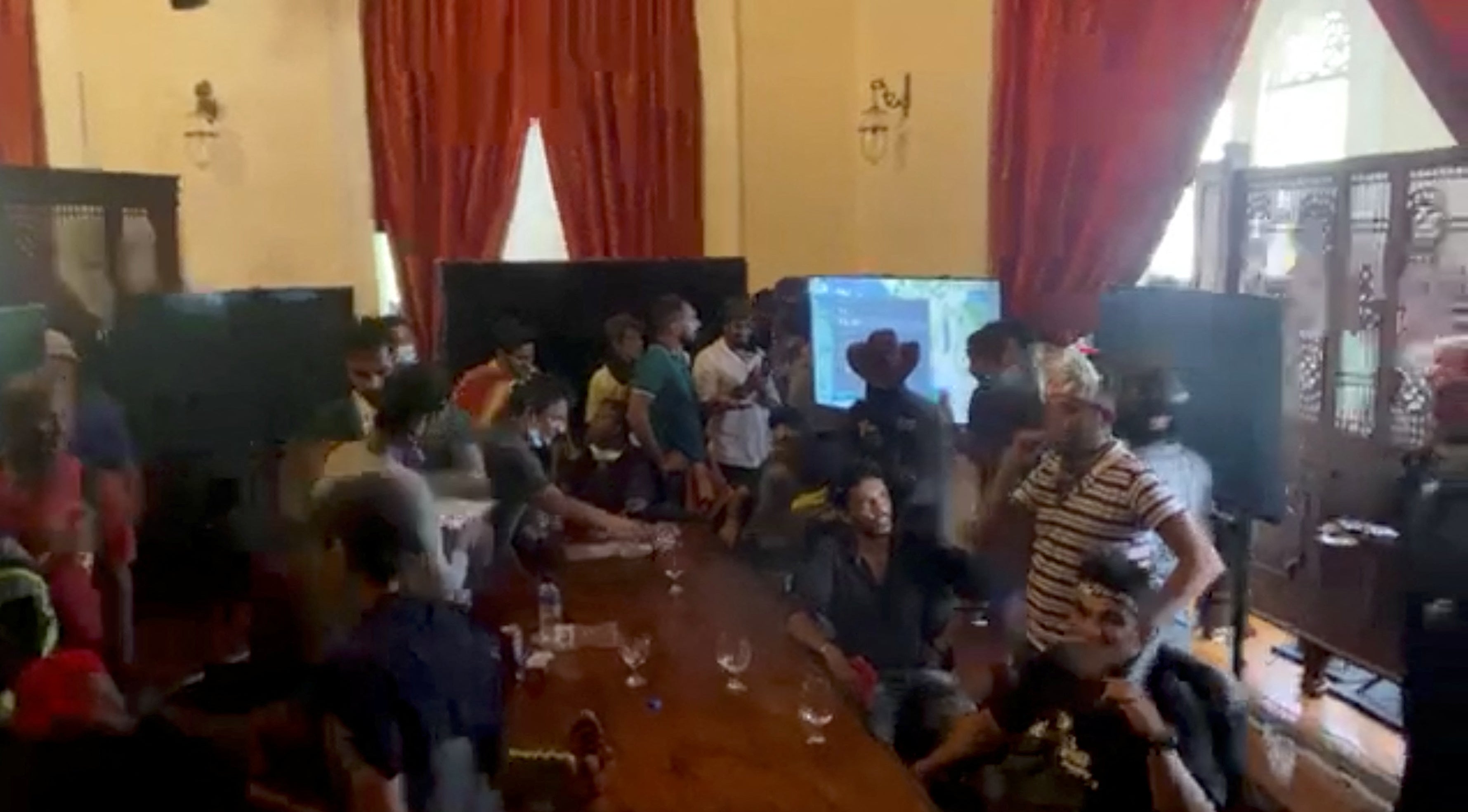
Sri Lankan president Gotabaya Rajapaksa reportedly fled after anti-government protesters stormed his residence on Saturday, ransacking the palace.
A huge number of protesters surrounded his residence after thousands of people gathered for one of the largest anti-government marches in the capital Colombo amid the country’s unabated economic crisis.
Mr Rajapaksa was escorted from his official premises on Friday, two defence ministry officials said, citing concerns over his security ahead of the planned protests.
In dramatic footage shown by a private broadcaster, Sirasa TV, a large crowd was seen forcing entry into the once tightly guarded residence of the country’s highest-level official.

A Facebook livestream from inside the colonial-era whitewashed building showed protesters carrying flags and helmets, running into its rooms and corridors after apparently overrunning the president’s palace.
It came hours after Sri Lankan police fired tear gas and used water cannons to break up violent protests by those who defied curfew orders.
Packed in overcrowded buses and trains, people from across the island nation of 22 million poured into the capital city for 9 July protests that were planned to demand the resignation of Mr Rajapaksa in a fresh wave of resistance.

Images appeared to show protesters wearing “Go Gota Go” headbands jumping into the presidential palace swimming pool, while footage showed people in large numbers raising banners through the staircase and corridors of the building.
Videos emerging from the president’s house showed protesters feasting in his kitchen, standing on tables and taking selfies on the beds in the rooms of the palace.
The curfew that was imposed to thwart the massive rallies was withdrawn on Saturday after people defied it in large numbers. It only “encouraged more people to get on the streets in defiance”, a top defence official told AFP.
The orders to block the movement of people were lifted after opposition from rights group who called them “illegal and a blatant violation” of rights.
At least 21 people, including two police personnel, were injured in the protests on Saturday and several were hospitalised, hospital officials told Reuters.
To control the angry crowd at the presidential residence, police fired shots in the air but were unable to contain the overwhelming force, eyewitnesses said.
The whereabouts of the president were not immediately confirmed.

The country’s prime minister, Ranil Wickremesighe, has agreed to resign, his office says, to make way for an all-party government. He earlier summoned an emergency meeting of political party leaders after the unprecedented storming of the house in the commercial capital.
He has requested the speaker to summon parliament, a statement from the prime minister’s office said.
Anti-government protests, which have been taking place since March, have plagued Sri Lanka as it faces an unprecedented economic crisis amid a chronic shortage of foreign currency to import basic necessities. Soaring inflation has meant devastation for people who are desperate for basic food, medicines and fuel.

The country is on the brink of bankruptcy after defaulting on its debt for the first time in its history and is now seeking help from multilateral money-lending banks as well as neighbours India, China and Japan.
Several analysts believe Mr Rajapaksa is responsible for the economic crisis – its worst since gaining independence in 1948 – which has been slowly taking shape in recent years.
Sri Lanka has recorded the highest inflation in Asia, rising to 60 per cent.







